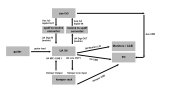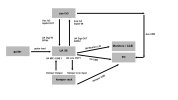Parmageddons
New Member
Hi all,
I'm looking to purchase a new audio interface and albeit expensive, the UA stuff appears to be getting incredible reviews, so leaning that way.
I do like the tones i've been getting with my axe fx though, running it through the power section of a fender hot rod deluxe, I dont want to lose that as I do enjoy record that sound mic'd up along side D.I'ing it too...... So wondering what is the best way to hook all this up?
I have seen a few threads on here suggesting going Guitar -> Axe FX -> UA Apollo -> PC / Monitors.
MY question I guess is:- Could it also work if It went Guitar -> UA Apollo -> Axe FX -> PC / Monitors?
The reason I ask is because I also have a Kemper that I often use too. In an ideal world I'd have the UA apollo running to both the axe and kemper, and i'd only ever plug into the UA Apollo then decide which modeller I want to use on the day of recording....without having to rewire and unplug a load of stuff every time.
And if the above wasnt complicated enough. In the same setup. I want to be able to use UA apollo with Neural DSP VSTS too, and bypass the axe and kemper entirely.... but again without having to unplug stuff etc.
Is the above even possible? If so, how? If not, what do I need to tweak / rethink?
thanks so much
I'm looking to purchase a new audio interface and albeit expensive, the UA stuff appears to be getting incredible reviews, so leaning that way.
I do like the tones i've been getting with my axe fx though, running it through the power section of a fender hot rod deluxe, I dont want to lose that as I do enjoy record that sound mic'd up along side D.I'ing it too...... So wondering what is the best way to hook all this up?
I have seen a few threads on here suggesting going Guitar -> Axe FX -> UA Apollo -> PC / Monitors.
MY question I guess is:- Could it also work if It went Guitar -> UA Apollo -> Axe FX -> PC / Monitors?
The reason I ask is because I also have a Kemper that I often use too. In an ideal world I'd have the UA apollo running to both the axe and kemper, and i'd only ever plug into the UA Apollo then decide which modeller I want to use on the day of recording....without having to rewire and unplug a load of stuff every time.
And if the above wasnt complicated enough. In the same setup. I want to be able to use UA apollo with Neural DSP VSTS too, and bypass the axe and kemper entirely.... but again without having to unplug stuff etc.
Is the above even possible? If so, how? If not, what do I need to tweak / rethink?
thanks so much


